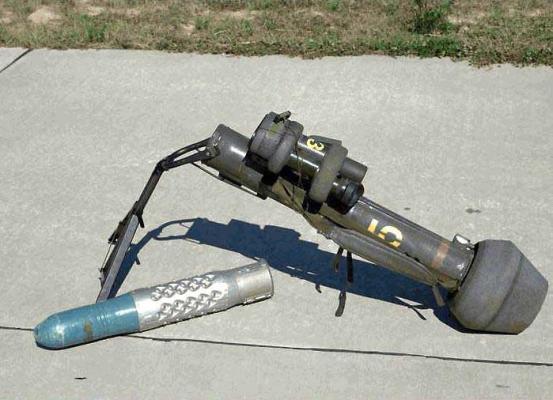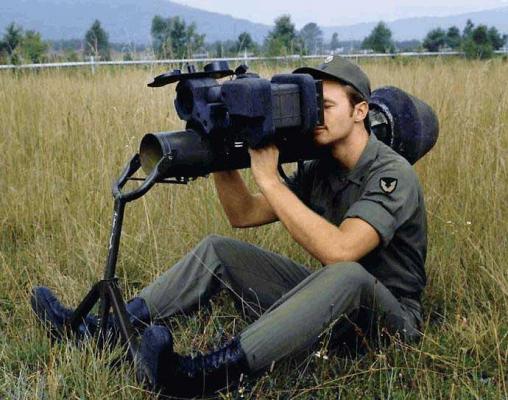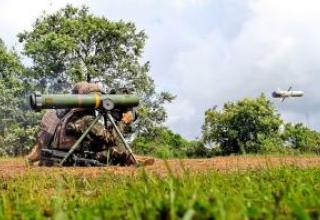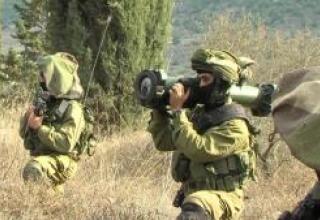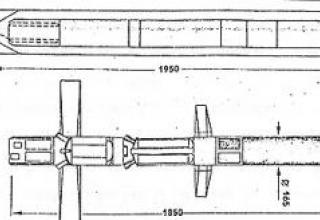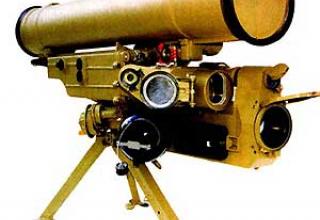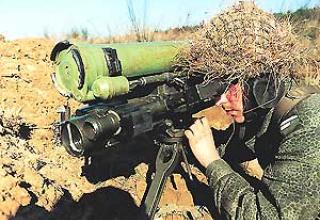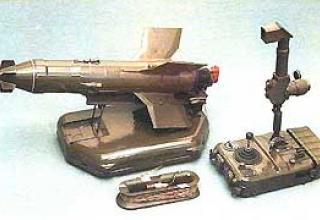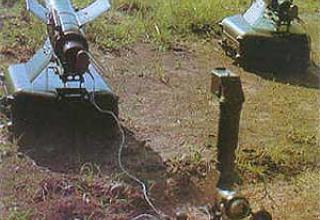At the international exhibition of arms and military equipment held in early October 1992 in Athens (Greece), the U.S. firm McDonnell Douglas first introduced the medium range anti-tank missile systems (ATM) "Dragon-2" and "Dragon-2 +".
The Dragon-2 and Dragon-2+ anti-tank missile systems are designed to engage main battle tanks, armoured vehicles, bunkers and other targets at ranges from 65 to 1,000 meters. These systems are the result of more than 20 years of continuous improvements in the design of the M-47 "Dragon-1" basic battle tanks and the use of modern technology.
The Dragon-1" base missile defense system was developed by McDonnell Douglas in 1970 and is in service with ground forces of more than 15 countries, including the world: The USA, Israel, Jordan, Morocco, the Netherlands, Saudi Arabia, Spain, Switzerland, Thailand and Yugoslavia .
The main difference between the Dragon-2 and the basic version is the combat equipment of the missile. The "Dragon-2" missile is equipped with a new more powerful cumulated BC with increased armor penetration (up to 950 mm). The Dragon-2+ complex includes a missile equipped with an additional marching engine and a new tandem BC with a spring-loaded needle, which has an additional leading charge to overcome the layer of reactive armor.
The developer guarantees the possibility of upgrading the Dragon-1 and Dragon-2 complexes to the Dragon-2+ level.
It is known that McDonnell Douglas also developed the Dragon-3 anti-tank system with a range of 1500m, a missile equipped with a tandem BC, and a new all-day tracking device. Development of the "Dragon-3" complex was stopped due to lack of funds in 1989.
The "Dragon" complex was limitedly used during the operation "Desert Storm" against Iraq in 1991, as well as during the Iran-Iraq conflict.
Composition:
The "Dragon-2" ("Dragon-2+") complex consists of:
- transport and launch container (TPC) with bipod,
- wire-guided missiles,
- escort devices with day or night sight, which is used repeatedly.
The complex is served by one operator. The complex has no special machine, shooting from the shoulder. For ease of aiming at the TPK has a folding pushbutton-soshka. When the missile is launched, the operator strengthens the escort device on the transport and launch container with a day or night sight, combines the crosshairs of the sight with the target and launches the missile. After the missile departs from the launch tube and reaches the required range, a BC fuse is detonated, the missile is brought to the sighting line, and guidance commands are transmitted to the missile via a wire communication line. During the missile flight, the operator holds the target in the crosshairs of the sight until the missile meets the target. After the shot is fired, an empty container is ejected and the sight is placed on the next container with the missile.
The Dragon-2+" complex includes a missile equipped with an additional marching engine and a new tandem BC, which has a spring-loaded needle, which has an additional leading charge to overcome the layer of reactive armor, and a missile escort device with an improved day or night sight. The "Dragon-2+" APC is characterized by shorter flight time at maximum range. The temperature range of combat application of the system with day sight is -32 ... +63°С , with night sight -32 ... +52°С .
The "Dragon-2+" complex tracking device contains an upgraded digital electronic unit and a built-in device for checking the complex, which eliminates the need for special checking equipment, increases reliability and maintainability of the complex in the field and its logistics.
Characteristics:
| "Dragon-2" | "Dragon-2+" | |
| Range of fire, m | 65-1000 | 65-1000 |
| Missile flight time at a range of 1000m,s. | 11.5 | 6.2 |
| Missile flight time at a range of 1500 m, s. | - | 8.6 |
| Weight of the complex in combat position with day sights, kg | 15.4 | 17.7 |
| Weight of complex in combat position with night sight , kg | 22.1 | 24.6 |
| Weight of TPK with rocket during transportation , kg | 12.9 | 15.5 |
| Weight of TPK with rocket in combat position , kg | 12.3 | 14.8 |
| Weight of escort device with day sights, kg | 3.1 | 2.9 |
| Weight of escort device with night sight , kg | 9.8 | 9.8 |
| Length of TPK, mm | 1154 | 1154 |
| Rocket length, mm | 852 | 852 |
| Rocket body diameter, mm | 127 | 127 |
| Missile starting weight , kg | 10.07 | 10.07 |
Testing:
Experimental and design work on the creation of the "Dam" complex was carried out on the basis of the USSR Council of Ministers Decree of December 31, 1969 № 999-362 (Order of the Minister of Mechanical Engineering of January 22, 1970 № 23 on the tactical and technical task of 62758 with the deadline for submission for state testing in the second quarter of 1972.
At the testing stage, as a combat vehicle of the self-propelled shore-based jet bomb of the "Dam" complex was used a regular combat vehicle BM-21 system "Grad", modified to reduce the force of locking force, as well as its re-equipment converter to provide power supply to electrical equipment (guidance of the launcher) from the industrial power grid.
Experience of development of "Dam" complex has shown impossibility in short term (according to the plan the term of 3 months was established) to perform works on updating and reissue of the documentation by results of factory tests and to make on it the state party. Usually it required at least 9-12 months.
By results of performance of works by the sketch design (June, 1971) the complex has been recommended on factory testing (the conclusion in part 62758, out. № 715/003803 from 09.09.1971).
The factory development should have been confirmed by the results of the following tests:
- 15 poster bombings of combat units;
- 99 rocket engine bench tests;
- 500 launches of projectiles from a combat vehicle, of which 400 launches at the Institute "Geodesy" and 100 launches in 78384.
As part of the factory development work, various types of them were entrusted:
- Chapaevsky Chemical Plant - filling combat units with explosives.
- Institute "Geodesy" - carrying out flight tests.
- Perm Machine-Building Plant named after V.I. Lenin - delivery of two combat vehicles BM-21PD: one to the Institute "Geodesy" and the second in 78384.
- Research Institute "Search" - detonators 95VZ.
- Leningrad Research Institute of Chemical Instrument Engineering - protected pyropatroons PP-9RS-3N.
As of March 15, 1972, the factory development could be completed by June 15, 1972.
In 1984, Vanin Evgeny Sergeevich for his work on the topic: "Ammunition to the self-propelled shore-based jet complex "Dam" (work presented by NPO SPLAV was awarded the prize named after S.I. Mosin. He was directly involved in the development of the "Dyamba" complex and the ammunition for its ORS-60.
Sources:
- M-47 DRAGON Anti-Tank Guided Missile
- Armada International, 1990, №2, PP. 22-34.
